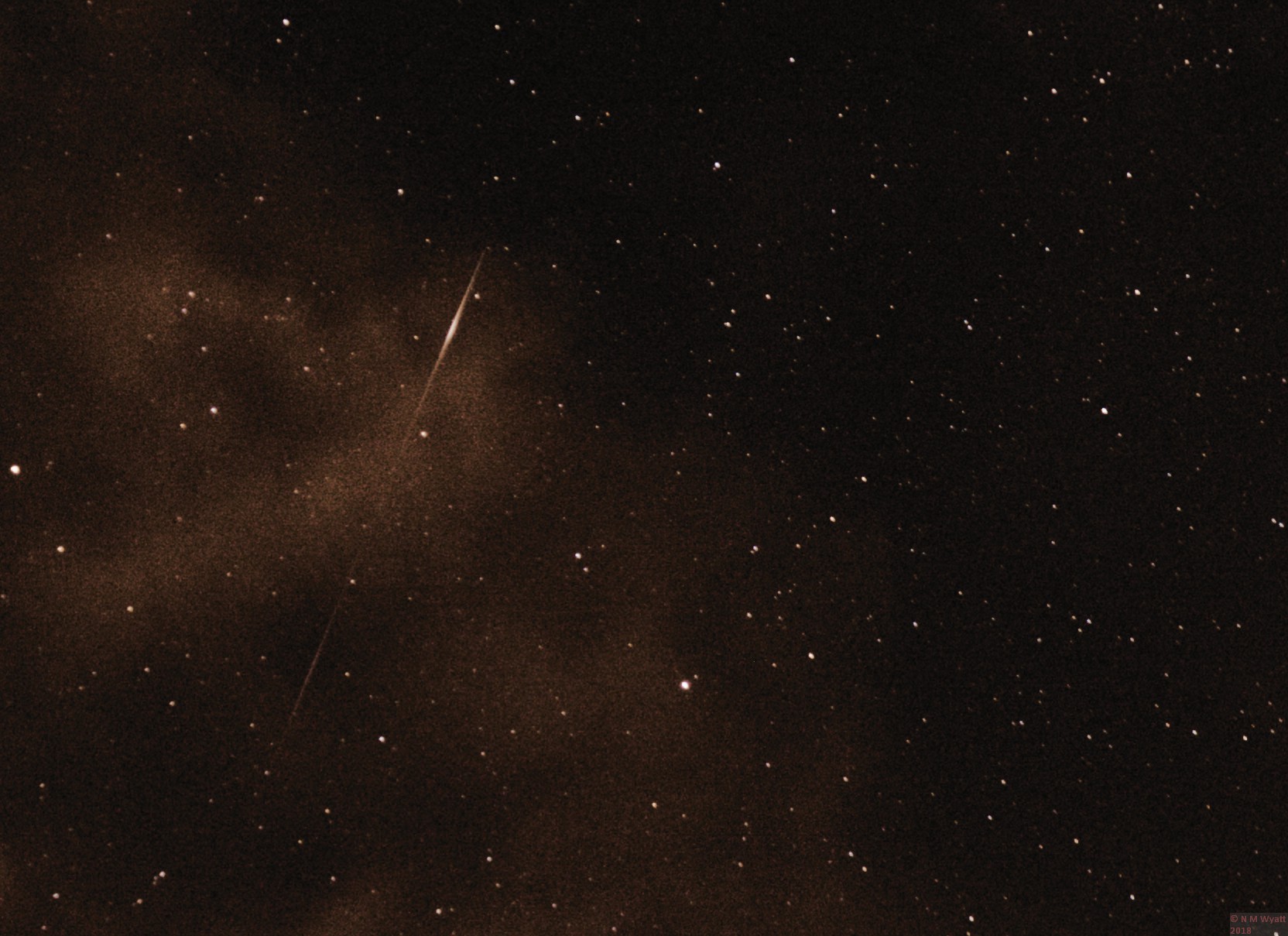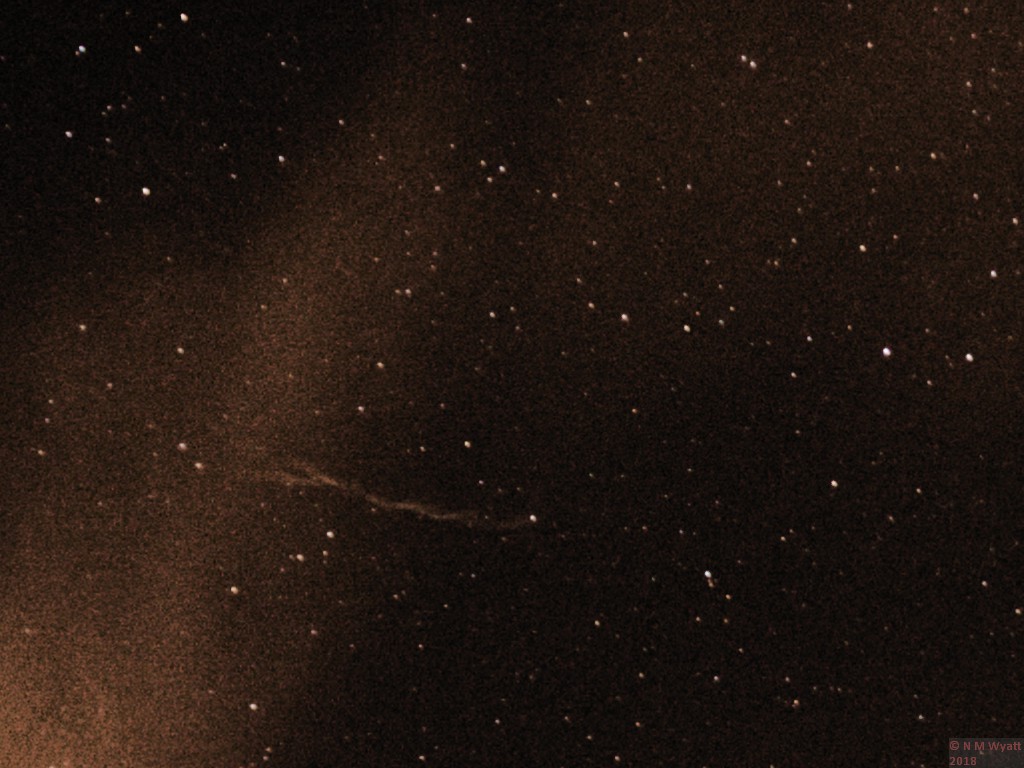A meteoroid is a lump of, well, stuff drifting through space. It could be a bit of comet, material that never quite formed a planet or even a rock or dust hurled into space when two objects collided. Each day thousands of meteoroids, most tiny, are captured by Earth's gravity and burn up in the atmosphere, becoming meteors. Some of these are large enough to reach the ground intact, usually as metallic or glassy rocks - meteorites.
Unlike many objects in the night sky, larger meteors are fast and spectacular. Although 'meteor showers' happen on regular dates individual meteors cannot be predicted, so the techniques is to point a camera at the sky and take lots of long, say 30-second, exposures.
Even a wide-angle lens can only 'watch' a small part of the sky, expect to see far more meteors than you capture in pictures. This Perseid meteor below was one of a handful captured from 250 exposures, yet I saw going on for fifty individual meteors. Ideally a fish-eye lens that covers the whole sky can be used, but then the trails are rather short.
A Perseid meteor seen through light cloud
The name 'Perseid' for this meteor shower is because all the meteoir apopear to come from a single point in the constellation Perseus, called the radiant of the shower. the best view is at about right angles to the radiant. The Perseids appear in early August, peaking about the 13th, when the Earth is passing through the track of a disintegrated comet.
Ionisation Trails
Meteors leave a persistent ionisation trail in their wake, which can be used to 'bounce' radio waves around the Earth. Big meteors can leave an ionisation trail that is visible for some time after the meteor has passed. Here's one from that Perseid shower that was also photographed by at least two other observers, also in Staffordshire.

